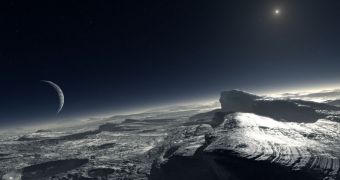The number of objects in our solar system just got bigger, with the recent detection of what may very well be three previously-unknown dwarf planets. The objects were discovered near the orbit of Pluto, which is itself classified as a dwarf planet.
However, Pluto is not the only celestial body in this class in the Kuiper Belt. It is joined by dwarf planets such as Eris, Makemake and Sedna. Ceres is also a dwarf planet, but it is located in the Inner Asteroid Belt (IAB), between the orbits of Jupiter and Mars.
According to the earliest analysis of the new objects, it would appear that each of them was rounded by its own gravitational pull. This means that can be classified as dwarf planets, but do not meet the necessary requirements to be called a fully-fledged planet.
In addition to the these objects, 11 more celestial bodies were discovered during the same investigation. Researchers focused on the Kuiper Belt because it contains vast numbers of icy bodies such as comets and asteroids, right alongside dwarf planets. The Belt lies beyond Neptune's orbit.
“Three of the discoveries would be in the dwarf planet regime. The others were much smaller, and they're probably just irregular chunks of ice or rock,” explains Carnegie Institution of Washington (CIW) astronomer and lead study author Scott Sheppard.
The scientist and his colleagues used the 1.3-meter Warsaw Telescope for this study. The instrument is located at Las Campanas Observatory, in Chile. It managed to differentiate the three objects from the background, and also determined that all of them are more than 250 miles (400 kilometers) wide.
The International Astronomical Union (IAU) defines a dwarf planet as a object big enough that its gravity makes it round, but small enough not to be able to clear its orbit of other celestial bodies.
Officially, the IAU recognizes the existence of five dwarf planets, four rocky planets, and four gas giants in out solar system, bringing the total number of large objects to 13. However, experts admit that tens or even hundreds of dwarf planets may orbit the Sun.
“This survey basically completes the Belt for the big stuff. So Pluto and Eris are the kings of the Kuiper Belt area, basically,” Sheppard explains in an interview for Space. The two dwarf planets are the largest objects in the Belt, with a diameter of about 1,450 miles (2,333 kilometers).
The team leader says that the search for large objects is far from over. “There could still be Mars- or even Earth-size objects way out there, at hundreds of AU, that would be too faint for us to detect,” he says.
“It's pretty amazing when you think about it. It's unlikely, but it's possible,” Sheppard goes on to say. The new study was accepted for publication in an upcoming issue of the esteemed Astronomical Journal.

 14 DAY TRIAL //
14 DAY TRIAL //